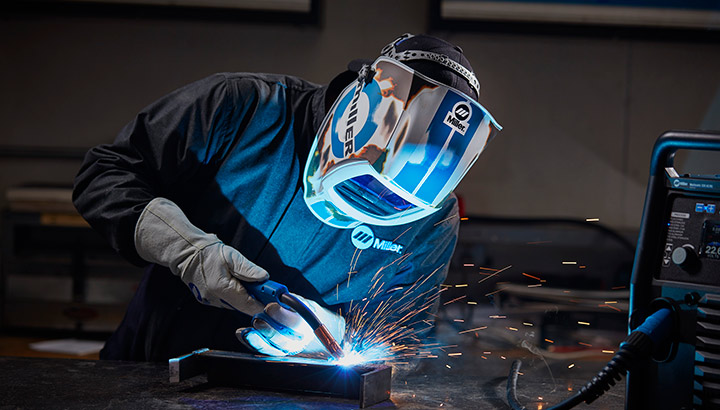The Importance of Welding WPS: Guaranteeing Quality and Safety in Your Projects
Wiki Article
The Ultimate Guide to Welding WPS Procedures: A Thorough Introduction for Welders
In the intricate world of welding, Welding Treatment Requirements (WPS) work as the foundation of guaranteeing top quality, uniformity, and safety in welding operations. Recognizing the nuances of creating, applying, and checking WPS treatments is important for welders seeking to boost their craft and satisfy industry criteria. As we delve into the numerous components of a WPS and explore the intricacies of credentials and accreditation, we will certainly reveal the vital role these treatments play in the world of welding. Let's get started on a trip to unwind the intricacies and importance of WPS treatments in welding methods.Relevance of WPS Procedures
Comprehending the importance of Welding Procedure Specs (WPS) treatments is critical for ensuring the top quality and stability of bonded frameworks. WPS procedures act as a roadmap for welders, describing the essential actions, parameters, and products needed to achieve a sound weld. By adhering to WPS guidelines, welders can make sure consistency in their job, bring about dependable and structurally sound welds.One of the primary reasons WPS procedures are necessary is their function in preserving weld top quality and honesty. Complying with the specified welding parameters and strategies detailed in the WPS aids stop defects such as porosity, fracturing, or insufficient combination, which can jeopardize the stamina and sturdiness of the weld. Additionally, WPS procedures are essential for making sure compliance with market criteria and codes. By following well-known WPS standards, welders can demonstrate that their job satisfies the required needs for security and quality, giving assurance to customers, assessors, and governing bodies. Fundamentally, the relevance of WPS procedures can not be overstated, as they are fundamental to attaining regular, top notch welds that meet market requirements and requirements.

Parts of a WPS
A Welding Procedure Specification (WPS) normally consists of vital parts that detail the particular needs for carrying out a weld, ensuring consistency and quality in the welding procedure. The crucial elements of a WPS consist of vital variables such as base metals, filler steels, interpass and preheat temperature levels, welding procedures, protecting gases, welding placements, and post-weld warm treatment needs.Base metals refer to the materials being joined, while filler steels are used to load the gap between the base steels during welding. The welding process details the certain strategy to be used, whether it's gas steel arc welding (GMAW), shielded metal arc welding (SMAW), or an additional technique. Welding placements specify the orientations in which welding can be performed.

Qualification and Certification
Having actually developed the important components of a Welding Treatment Specification (WPS), the focus now moves towards the critical aspects of qualification and accreditation in welding practices.
Certification, on the other hand, is the formal recognition of a welder's certifications by a pertinent qualification body or organization. Welding accreditations are normally based on the specific welding procedures, products, and positions a welder is qualified to deal with. Holding a legitimate welding accreditation shows that a welder meets sector standards and is skilled to do welding jobs to the needed specifications.
Creating a WPS
To develop a Welding Procedure Specification (WPS) that satisfies industry requirements, careful consideration of welding procedures, products, and functional specifications is essential. The first step in creating a WPS is to identify the welding process to be used, such as gas metal arc welding (GMAW) or protected metal arc welding (SMAW)
Carrying Out and Keeping An Eye On WPS
Upon completing the detailed Welding Procedure Spec (WPS) that thoroughly details welding procedures, products, operational specifications, and quality guarantee actions, the focus shifts to successfully carrying out and checking the recognized treatments. Execution entails making certain that all welders involved in the project know with the WPS and follow it thoroughly during the welding process. This next requires offering ample training and guidance to assure adherence to the defined procedures. Monitoring the WPS involves continuous oversight to validate that welding tasks line up with the recorded requirements. Examinations, screening, and quality assurance procedures are crucial parts of the surveillance process to identify any discrepancies or concerns without delay. Regular audits and reviews of the welding procedures aid in preserving visit the site consistency and quality throughout the task. Efficient implementation and surveillance of the WPS are important for making certain the integrity, stamina, and safety and security of the welded joints, ultimately contributing to the overall success of the welding project.Verdict
Finally, understanding and following Welding Treatment Requirements (WPS) is essential for welders to make certain quality, consistency, and safety in their work. By understanding the parts of a WPS, getting appropriate credentials and certifications, producing thorough treatments, and implementing and monitoring them efficiently, welders can boost their skills and efficiency in welding techniques. Complying with WPS procedures is essential for creating high-grade welds and meeting industry criteria.
In the complex world of welding, Welding Treatment Requirements (WPS) offer as the foundation of guaranteeing top quality, uniformity, and safety and security in welding procedures. The welding process details the details strategy to be made use of, whether it's gas steel arc welding (GMAW), shielded steel arc welding (SMAW), or an additional method.To develop a Welding Procedure Spec (WPS) that fulfills market criteria, careful factor to consider of welding processes, products, and functional specifications is crucial. The initial step in producing a WPS is to recognize the welding process to be used, such as gas steel arc welding (GMAW) or secured steel arc welding (SMAW)Upon finalizing the thorough Welding Treatment Requirements (WPS) that thoroughly information welding procedures, products, operational specifications, and top quality guarantee procedures, the focus shifts to efficiently carrying out and checking the well-known procedures.
Report this wiki page